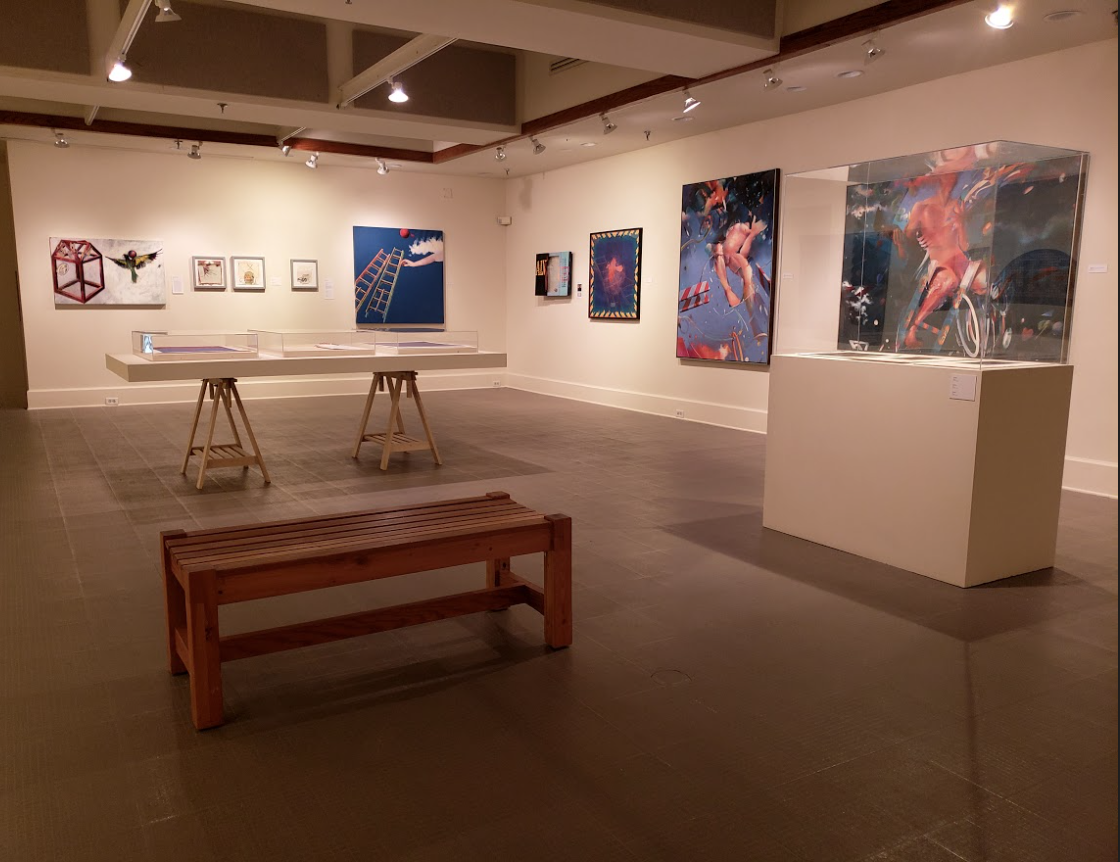With a passionate and unique way of teaching, a professor will be well remembered by their faculty and students during their tenure in college. Winthrop University Galleries hosted a panel Oct. 16 to discuss the life and legacy of one such professor, Paul Martyka, an associate art professor who passed away in 2016.
The panel was held as part of the “Seeds to Sow” exhibition, which showcases the work of Martyka. The panel aimed to share experiences of four Winthrop Alumni on how Martyka impacted their lives. Former chairman of the department of fine arts Tom Stanley served as the moderator of the event and asked questions to the panel.
“[The goal was to] look at Paul as an artist, educator and collaborator and consider the experiences our panelists had with him,” Stanley said.
One of the panelists was Janice Mueller, a Winthrop Alumni from 2009 who remembered spending time with Martyka arguing about art and science, which lead to mutual respect.
“I learned a lot from him, especially as a teacher” said Mueller, “He had high expectations and a lot of students grew up with him.”
Another panelist was Reed Elliot, who graduated in 2003 and is currently an art director in Atlanta, Georgia. He remembered growing up in New Orleans, and meeting Martyka when he was 16 at an art show along with the experiences he had with the professor, which ultimately led him to Winthrop.
“He was pretty much a father figure to me during my time at Winthrop,” Elliot said. “I got to travel with him and make art with him.”
Chris Clamp, the operations manager at Atelier 4 in Charlotte, North Carolina, was another panelist who brought up that an interesting fact about Martyke; he initially wanted to be a mathematician and his work with geometric design affected his art.
“Paul always made an impact with me through numerology and his interests made up his character, which I found interesting,”” Clamp said.
The final panelist was Michael Gentry, who is the gallery manager of the Arts Council of York County. He talked about how Martyka would push all of his students to succeed and improve themselves.
“He was always extremely supportive, pushing you to his next level. He asked you questions that you haven’t considered,” Gentry said.
Each panelist and the audience got to reminisce about being taught under the professor and how his teaching style helped students branch out from their usual style.
“As a student, Paul was very demanding; nothing was done halfway” said Clamp, “He taught me that discipline was the doorway to freedom.”
The panel was opened up near the end for the audiences to ask the four panelists questions and talk about their personal experiences, whether it be their work in art or how Martyka encouraged them.
“We collaborated when I started teaching, Martyka taught me how to teach and his teaching methods taught me to expect results,” Mueller said.
The panelists agreed that students who never learned from, nor were impacted by Professor Martyka should see the exhibition and see how much he affected people outside of Winthrop University.
“You’re going to see the mathematician in the paintings, but they’ll never see that he was one of the sweetest men alive,” Elliot said.
Paul Martyka was remembered fondly not only for using his experience of math and science in his art, but how he saw inspiration for art from everyday interactions.
“The creativity never really stopped with him” said Gentry, “He was always thinking about art, with how you dressed and how you interacted with other people.”
The “Seeds to Sow” exhibition will be open until Nov. 16 at the Rutledge and Elizabeth Dunlap Patrick Galleries. The art exhibit is open from Monday through Friday on 9 a.m. to 5 p.m. For more information, you can visit the Winthrop Galleries website at
www.winthrop.edu/galleries.




